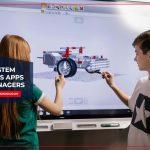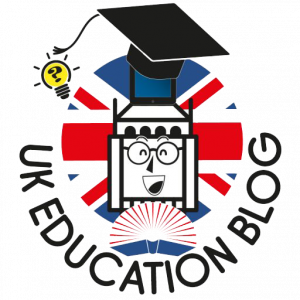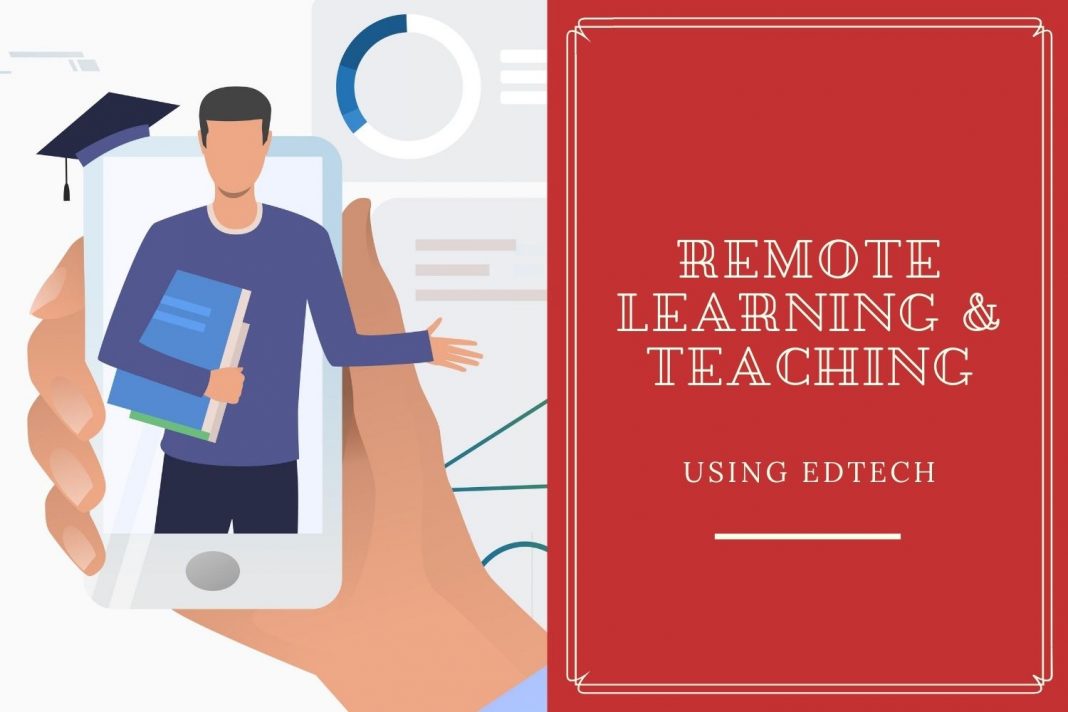Classroom management in the digital age is not how it used to be even a few years ago, and that’s mostly for the better.
Educational Technology also known as EdTech is making education more approachable and accessible to a wider range of students across all age and ability groups through improved distance learning and teaching.
By focusing on a few key steps for integrating Education Technology, Learning Management Systems and Remote Learning and Teaching Platforms in schools, teachers can improve the standard of education in any remote classroom environment.
However, this applies to both digital and traditional classes, which also brings in the advantage of consistency.
The Importance of Consistency Across Different EdTech & Online Teaching Formats
A major obstacle being faced by school teachers and students in the middle of the ongoing school lockdowns is that of inconsistency.
As a lot of schools had never incorporated an EdTech powered classroom environment before, the change in format is proving to be a serious challenge for students and teachers alike.
Many aspects of the digital classroom are different from the traditional classroom to those that have never experienced anything but the latter. Many long-serving teaching staff struggled with the sudden digital teaching transformation due to a lack of digital skills.
The associated learning curve and the adjustment issues have made school less accessible to some students, while many teachers are struggling to gain the control that they need in order to be able to properly conduct a class.
As EdTech in English Schools strives towards creating that sense of consistency and continuity across all classroom environments, be it virtual or real, the adoption of adequate classroom management technology can help schools achieve seamless integration between the two.
Schools with EdTech Integrations are much better Equipped to Handle Remote Classes
The main difference between traditional classes and virtual classes is that the teachers and their students are no longer in the physical same room.
The human brain is highly dependent on its sense of spatial perception and habit; therefore, the absence of an actual classroom can put additional stress on both students and educators. Especially for younger children, it is challenging to refer to a screen rather than a human being.
This is particularly true for schools and teachers that have never adopted Educational Technology before. The

establishments that did integrate digital classrooms and another associative tech before the present pandemic situation came into existence will have a much easier time.
Students and teachers to whom the concept of interacting via an online environment does not seem so alien or disconnected will be making progress in any remote classroom format much faster. Despite that, traditional schools can benefit from adopting the right EdTech trends and online educational resources now, even if they had not done so earlier.
This brings us to the next topic, which is clever adoption and utilisation of interactive classroom technology.
Improving Remote Classrooms with an Interactive Environment
If we were to take a scientific approach towards separating the most important and foundational aspects of a traditional classroom, the interaction between educators and their students would have to be a major one.
So, if there was a way for teachers to maintain the same level of interaction with their students while conducting a digital lesson, the session would immediately become more productive and easier to relate with for students.
 With the advanced interactive features from a site like classroom.cloud, student-teacher interaction with due feedback is easy to achieve in any remote classroom environment. Classroom.cloud is generally considered to be an excellent solution for classroom management in the digital age, and the solution’s interactive features were popular in EdTech way before the pandemic had broken out.
With the advanced interactive features from a site like classroom.cloud, student-teacher interaction with due feedback is easy to achieve in any remote classroom environment. Classroom.cloud is generally considered to be an excellent solution for classroom management in the digital age, and the solution’s interactive features were popular in EdTech way before the pandemic had broken out.
Along with common interactive features such as sharing files and enabling seamless text/voice interactions, it also has a very intuitive and handy quick polls feature to let teachers get a better understanding of how well their class is able to understand the current lesson.
To know more about remote teaching or digital learning management systems and other interactive elements like Seesaw, Google Classroom and more that are designed to help students and teachers breach the accessibility gap in online education, check out recommended LMS and software by the UNESCO.
Video Live Lessons for Best Outcomes
As previously mentioned, perception is the main barrier with remote classrooms, but it is improved significantly when the teacher can see every student on their computer screen, separated into small windows.
On the other hand, the student only needs to see the teacher during a video lesson. Not only does this improve the accessibility of each class by adding visual perception, but it also empowers the teacher to use whiteboards/blackboards in the same way that they would in a traditional classroom.
 Explaining lessons becomes a lot easier when students can see the teacher while they use the traditional methods to impart lessons on the young students.
Explaining lessons becomes a lot easier when students can see the teacher while they use the traditional methods to impart lessons on the young students.
This was of course, only an introduction to the various aspects and advantages of Education Technology in regard to how it can help bridge the gap between traditional and digital classrooms.
There are several others to discuss, depending on the classroom management software chosen and many schools are still trialling such and finding their own online teaching techniques and methods.
Nevertheless, the few mentioned here should help teachers and educational settings realise the kind of positive impact which the comprehensive implementation of IT in education can have today, as well as in the future.
Author Profile

- Editor in Chief
- Blogger and Educator by Passion | Senior Online Media & PR Strategist at ClickDo Ltd. | Contributor to many Education, Business & Lifestyle Blogs in the United Kingdom & Germany | Summer Course Student at the London School of Journalism and Course Instructor at the SeekaHost University.
Latest entries
 ed techMay 11, 2025Best 5 STEM Subjects Apps for Teenagers
ed techMay 11, 2025Best 5 STEM Subjects Apps for Teenagers careerApril 15, 2025Top 6 Student Side Hustles To Earn While You Learn
careerApril 15, 2025Top 6 Student Side Hustles To Earn While You Learn careerMarch 11, 2025The Smart Student’s Guide to Picking a Degree That Actually Pays Off
careerMarch 11, 2025The Smart Student’s Guide to Picking a Degree That Actually Pays Off ed techFebruary 19, 2025How AI Voice Generators Are Transforming the E-Learning Industry
ed techFebruary 19, 2025How AI Voice Generators Are Transforming the E-Learning Industry







